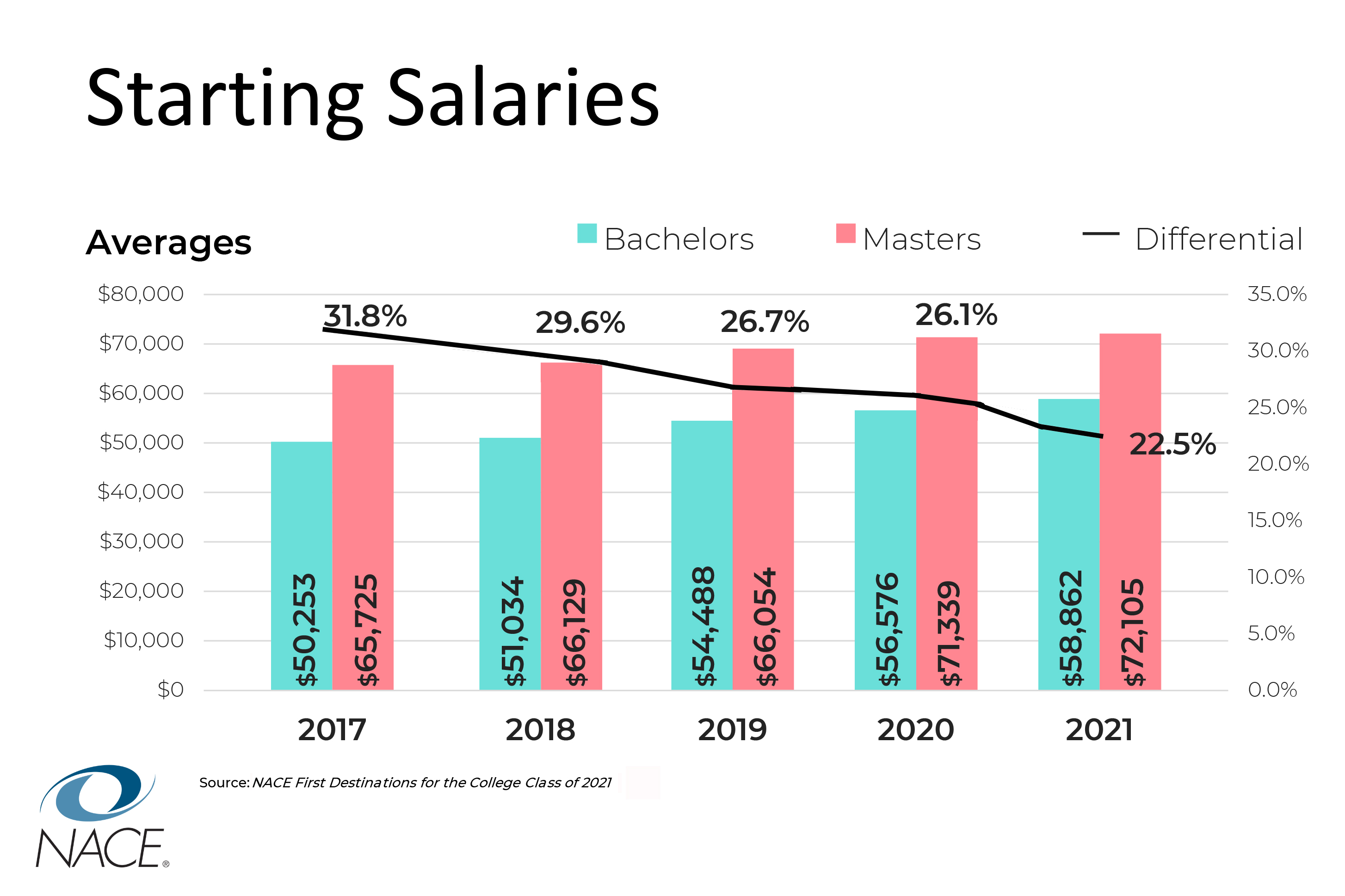What is the advantage of obtaining a master’s degree? In terms of average starting salary, that advantage has been declining in recent years.
Although there remains a salary advantage for college students obtaining a master's degree, the differential between average starting salaries of recent graduates earning bachelor’s degrees and master’s degrees is diminishing, according to results of NACE’s First Destinations for the College Class of 2021 report.
The survey found that there is currently a 22.5% salary differential between the degree levels. This is the lowest differential in recent years and is a drop from 26.1% for the Class of 2020 and from 31.8% for the Class of 2017. (See Figure 1.)
During that time, the average annual salary increases for master’s degree graduates have lagged those for students earning bachelor’s degrees. For example, master’s graduates from the Class of 2021 saw their average starting salary nudge up 1.1%. However, the average salary for bachelor’s grads jumped 4.0%.
Key drivers of this decline in average starting salary differential include the competitive job market for college graduates and the shift in the ways employers screen candidates to focus more on skills rather than degree level.
However, there are some disciplines for which the average starting differential is still considerable. For example, the average starting salary for both legal studies (73.5%) and communications technologies (65%) graduates exceeded the average salary at the bachelor’s degree level by more than 50%.
The First Destinations for the College Class of 2021 report is available on NACEWeb and includes an interactive dashboard. It is the eighth in a series that began with the college class of 2014. Data collection on outcomes took place from the date of graduation until six months after the end of the class year, which ends June 30. Schools had until December 30, 2021, to collect data from their 2021 graduates. This means that all results reported in the study are as of December 30, 2021. Participating institutions reported their data to NACE from January 5, 2021, through May 16, 2021. Overall, 293 schools provided information about their 2021 graduates in four degree levels—associate, bachelor’s, master’s, and doctoral-level programs. In total, the graduating classes of these reporting institutions represent approximately 686,000 graduates. Results for previous classes can be accessed on the NACE website.
Figure 1: Differential in average starting salaries between bachelor’s and master’s degree graduates



